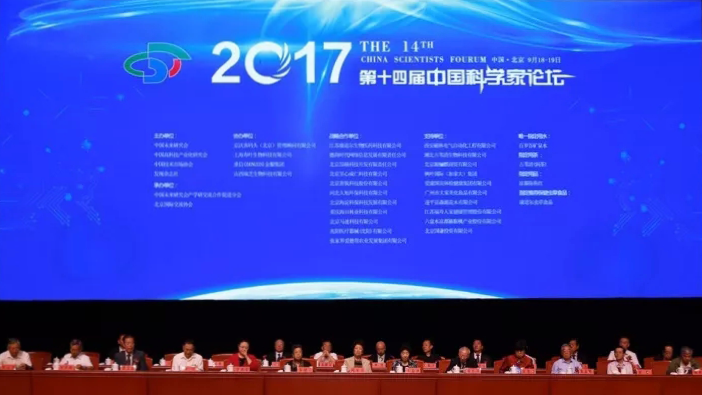
03
02
1. ACTL technical indications and patient treatment guidelines
1. ACTL technology indications
ACTL technology treatment is effective for most solid tumors and some hematological tumors, and has a wide range of applications. It has outstanding effects on lung cancer, breast cancer, colorectal cancer, prostate cancer, cervical cancer and other cancers that are positive for one or several tumor-related antigens. treatment effect. See the figure below for details of the covered tumor range:
Type of tumor Cancer name
Epithelial tissue, adenocarcinoma, lung cancer, stomach cancer, bowel cancer, etc.
Squamous cell carcinoma, nasopharyngeal carcinoma, esophageal cancer, cervical cancer, etc.
Mesenchymal tissue Lymphoma
Melanoma
Brain tumor, glioma
Myeloma, multiple myeloma
Other sarcomas
2. Relevant information that cancer patients need to provide for treatment with ACTL technology
2.1 General information
Including the name, gender, age, and presence or absence of adverse habits of the cancer patient.
2.2 Medical history data
Including the hospital’s diagnosis certificate, hospitalization medical history and/or discharge summary or medical history report, past and current treatment status, whether it is accompanied by other diseases, and history of allergies, etc.
2.3 Related inspections
(1) Serum tumor marker detection;
(2) Blood routine;
(3) Blood biochemical test including liver and kidney function;
(4) Routine urine tests for patients with urinary system tumors;
(5) Determination of blood estrogen levels in patients with female reproductive system tumors;
(6) Needle biopsy or surgical removal of tumor tissue. Perform immunohistochemical testing (please ask for details);
(7) Infectious disease inspection: Hepatitis B three series (two pairs and a half of hepatitis B), hepatitis C, AIDS, syphilis, etc.;
(8) CT, MRI, PET-CT, B-ultrasound and other imaging examination results.
3. Screening criteria for cancer patients
Patients who meet the following conditions, combined with the actual clinical situation, can be considered for treatment with ACTL technology:
3.1 The tumor tissues obtained by biopsy or surgery are detected by immunohistochemistry and other methods. The major histocompatibility complex class I molecules, namely MHC-I molecules, (also known as human leukocyte class I antigens, namely HLA-I antigens) are Positive. This inspection item is generally in charge of the hospital pathology department;
3.2 Peripheral blood leukocytes return to normal or close to normal (>3.0×109/L) (except for the normal value achieved by the use of leukocyte-enhancing drugs);
3.3 The treatment of no immune damage and bone marrow suppression can be used simultaneously;
3.4 No severe anemia (hemoglobin: 90~120g/L is mild anemia, 60~90g/L is moderate anemia, 30~60g/L is severe anemia, and less than 30g/L is very severe anemia.), whole body organs State of exhaustion or cachexia;
3.5 Liver and kidney functions are normal, and vital signs are normal;
3.6 No severe allergies;
3.7 No infectious diseases (syphilis, AIDS); hepatitis B, hepatitis C inactive period;
3.8 If at least one of the following tumor-associated antigens is positive by serological examination or immunohistochemistry, you can receive treatment:
(1) The serum tumor markers (antigens) related to this treatment routinely carried out in the clinical laboratory of the hospital include: carcinoembryonic antigen (CEA), keratin 19 (also known as cyfra21-1, CK19, K19), mucin antigen ( MUC-1), alpha-fetoprotein (AFP), squamous cell carcinoma antigen (SCC), prostate specific antigen (PSA), prostatic acid phosphatase antigen (PAP) and G250.
(2) If the serum tumor marker test result is higher than the normal value, the antigen can no longer be tested by immunohistochemistry. The result of blood tumor marker test is normal, not necessarily the result of immunohistochemistry is negative, it may be positive. Immunohistochemical testing is still needed.
(3) Immunohistochemical testing related to ACTL treatment is currently not comprehensive in most hospital pathology departments, but the corresponding antibodies can be purchased from commercial companies for immunohistochemical testing. The tumor-associated antigens are detailed in the table below:
Tumor type Cancer name Antigen target
Epithelial tissue Adenocarcinoma CEA, MAGE-A3, CK19, Survivin, PSMA, MUC-1,
Her-2/neu, NY-ESO-1 (CT6.1), G250, MAGE-C2 (CT10), MAGE-A2, SPANX, SP17
Squamous cell carcinoma SCC, CK19, CEA, MAGE-A3, Survivin, NY-ESO-1, (CT6.1), MUC-1, PSMA, MAGE-C2 (CT10), MAGE-A2, G250, Her-2/neu
Mesenchymal tissue Lymphoma CD20, CD269
Melanoma MAGE-A3, MAGE-C2 (CT10)
Brain tumor, glioma G250, MAGE-A3, MAGE-C2 (CT10)
Myeloma, multiple myeloma HM1.24, CD20, CD269
Other sarcomas NY-ESO-1 (CT6.1), SPANX, CEA, G250, MAGE-A3, MAGE-C2 (CT10), Survivin, MUC-1, CK19, Her-2/neu, SP17
Note: For details of the antigen targets corresponding to each cancer, please refer to the relevant company posters.
4. Relevant review materials that need to be provided by cancer patients after ACTL treatment
4.1 Tumor patients are in stable condition, no obvious recurrence, signs of tumor metastasis or infiltration, and normal serum tumor markers
(1) ACTL treatment is performed twice a month, three months (6 times) as a course of treatment;
(2) Check serum tumor marker tests and other items once a month;
(3) After a course of treatment, conduct a comprehensive evaluation before deciding on the future treatment plan. The main indicators of the evaluation are the results of serum tumor marker tests and imaging examination results;
(4) After a course of treatment, if the patient's condition improves or stabilizes, consider reducing the frequency of treatment.
The information that the patient needs to provide is: imaging examination, serum tumor marker test, blood routine and blood biochemical examination results.
4.2 Tumor patients have obvious recurrence, metastasis, infiltration and increased serum tumor markers
(1) ACTL treatment is performed twice a month, three months as a course of treatment;
(2) Serum tumor marker tests are performed every 2-3 weeks, and other items are determined by the condition;
(3) After the first course of treatment, conduct a comprehensive assessment and decide whether to continue ACTL treatment.
The information that the patient needs to provide is: imaging examination, serum tumor marker test, blood routine and blood biochemical examination results.
4.3 Tumor patients with severe disease and rapid progress
(1) For such patients, adopt ACTL "shock" treatment plan;
(2) ACTL treatment is performed every five or ten days, 4-6 treatments are a course of treatment;
(3) After the first course of treatment is over, conduct a comprehensive assessment and consider subsequent treatment options.
The information that the patient needs to provide is: imaging examination, serum tumor marker test, blood routine and blood biochemical examination results.
2. Judgment index of ACTL treatment efficacy
1. Changes in serum tumor markers
1.1 Generally, patients treated with ACTL technology are effective: abnormal tumor markers have decreased or been controlled.
1.2 Elevated serum tumor markers cannot be judged as invalid. ASCO recommends continuous dynamic observation for more than 45 days. If it decreases, it is judged to be effective, which is usually accompanied by a decrease in tumor load.
2. Imaging examination
2.1 The American Society of Clinical Oncology (ASCO) stipulates that anti-tumor treatment must adopt irRC efficacy evaluation standards. It is not appropriate to use RECIST for solid tumors. irRC can take the measured new lesions into the total tumor burden and compare it with the baseline tumor burden. Even if new lesions appear, as long as the total tumor burden does not increase by more than 25%, disease progression is not recognized. Unlike chemotherapy, the short-term increase in tumor burden after tumor immunotherapy is not necessarily due to tumor growth, but may also be due to temporary immune cell infiltration. In addition, the appearance of new lesions may also originate from the local inflammation caused by the infiltration of a large number of T lymphocytes in the small tumor foci that could not be detected by imaging. The irRC efficacy evaluation criteria are as follows:
irRC evaluation criteria
Efficacy evaluation Tumor burden
irCR (complete remission) reduced by 100%
irPR (partial remission) reduction ≥50%
irSD (stable disease) decrease <50% ~ increase <25%
irPD (disease progression) increased by ≥25%
Note: All evaluations of tumor burden are compared with baseline. Among them, irPD is the same as irCR and irPR and must be verified at two consecutive time points, that is, a second imaging examination must be performed for verification, and the re-examination must be at least 4 times apart week.
2.2 Tumor imaging examinations include: CT, PET-CT, and nuclear magnetic resonance (MRI) examinations.
3. Quality of life of cancer patients, ECOG score
3.1 After ACTL treatment, the patient’s appetite, physical strength, sleep, pain and other quality of life conditions will be improved to varying degrees. The ECOG and KPS scores of tumor patients will be improved to varying degrees. The cultured immune cells observed under the microscope of the cell culture room will be better. Significantly increase before treatment and get better. Improving the patient's immunity can also improve the patient's quality of life and increase the patient's confidence in treatment.
3.2 ECOG (Eastern Cooperative Oncology Group) score is to evaluate the general health status of patients before treatment. An important indicator of general health status is to evaluate their performance status (PS). The activity state is an indicator of the patient’s physical strength to understand his general health and tolerance to treatment. A simplified activity state of 0 to 5 and 6 levels has been developed for the patient. The KPS score (Karnofsky) generally considers Karnofsky above 80 points to be independent, that is, self-care level. 50 to 70 are divided into semi-independent (semi-independent), that is, life is semi-self-care. A score of 50 or less is dependent, that is, life needs help from others. See the table below for the comparison of ECOG and KPS scoring standards:
ECOG functional status scoring standard Karnofsky functional status scoring standard
Stamina score stamina score
The activity ability is completely normal, and there is no difference in the activity ability before the onset. 0 points Normal, no symptoms and signs 100 points
Can perform normal activities with mild symptoms and signs 90 points
Able to walk around freely, but restricted physical activity, but can walk around and be able to perform light or sedentary work (such as light housework, office work). 1 point Reluctant to perform normal activities with some symptoms or signs 80 points
Self-care, but unable to maintain normal life and work 70 points
Less than 50% of the time in bed. Can move around freely and take care of themselves, but cannot carry out any work activities. It accounts for more than 50% of waking time. 2 points Can take care of most of life, but occasionally need help from others 60 points
Often needs someone to take care of 50 points
In bed> 50% of the time. Can only carry out limited self-care, and can only spend more than 50% of the time awake in bed or wheelchair. 3 points Cannot take care of themselves, needs special care and help 40 points
Life is serious and cannot take care of yourself 30 points
100% bedridden. Disable completely. Cannot perform any self-care. It is completely limited to a bed or chair. 4 points Seriously ill, requiring hospitalization and active supportive treatment 20 points
Critically critical, near death 10 points
Death 5 points Death 0 points
The lower the ECOG score, the better the health and the more able to tolerate the side effects of treatment on the body, and therefore it is possible to receive thorough treatment. The higher the score, the worse the health condition, and many effective anti-tumor treatments cannot be implemented. The KPS score is below 40%, the treatment response is often poor, and the treatment response is often difficult to tolerate.



